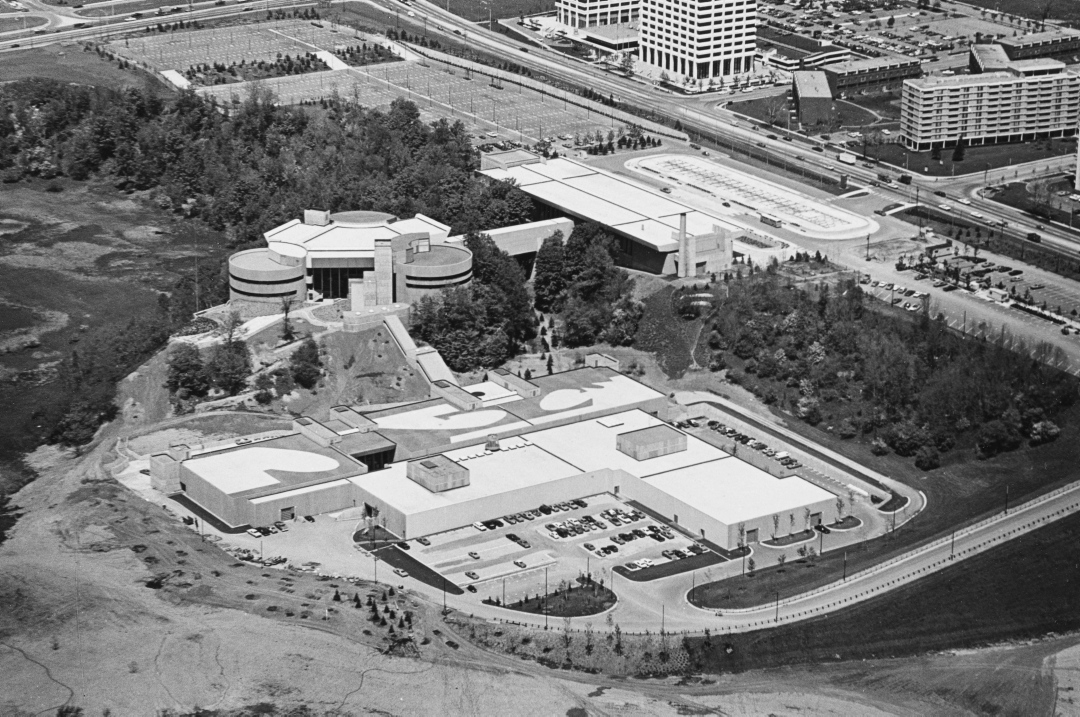
In 1958, the Metropolitan Toronto and Region Conservation Authority (MTRCA) acquired the Stong Family farm at the southeast corner of Steeles Avenue West and Jane Street. In the family since 1816, the Stong property included a collection of 19th century farm buildings that the MTRCA decided to preserve and use to tell the story of rural life in a typical Ontario community around the time of Confederation. In 1960, Black Creek Pioneer Village opened to the public and, over the next decades, grew as other at-risk heritage buildings and structures from across south-central Ontario were relocated to the site.

Planning for the Ontario Science Centre started in 1961, and in 1964 Premier John Robarts hired 33-year-old architect Raymond Moriyama to design the site and facility. Planned as Ontario’s main project to celebrate Canada’s centennial in 1967, the project was not completed and open to the public until 1969. Moriyama was sensitive to the natural features and beauty of the Science Centre site, located on a wooded ravine at Don Mills Road and Eglinton Avenue East. The facility was built with three linked structures which descend into the valley and provide spectacular views through many windows. Another advantage of the site was its proximity to the recently opened Don Valley Parkway. With the invitation to “please touch the exhibits,” a visit to the Ontario Science Centre has been a highlight for many students in the Greater Toronto Area for more than fifty years, and provides a fun and educational introduction to topics such as earth sciences, chemistry, technology and human biology.

